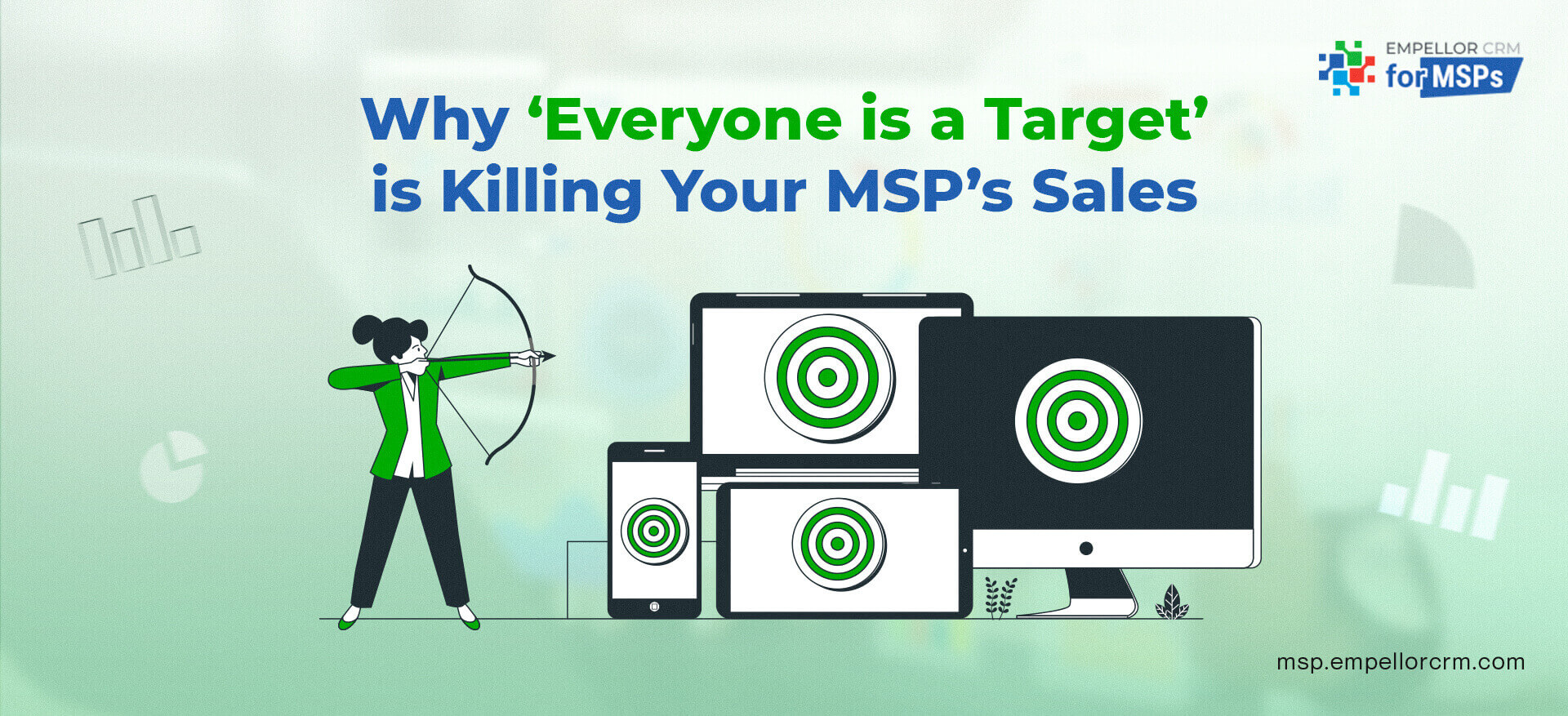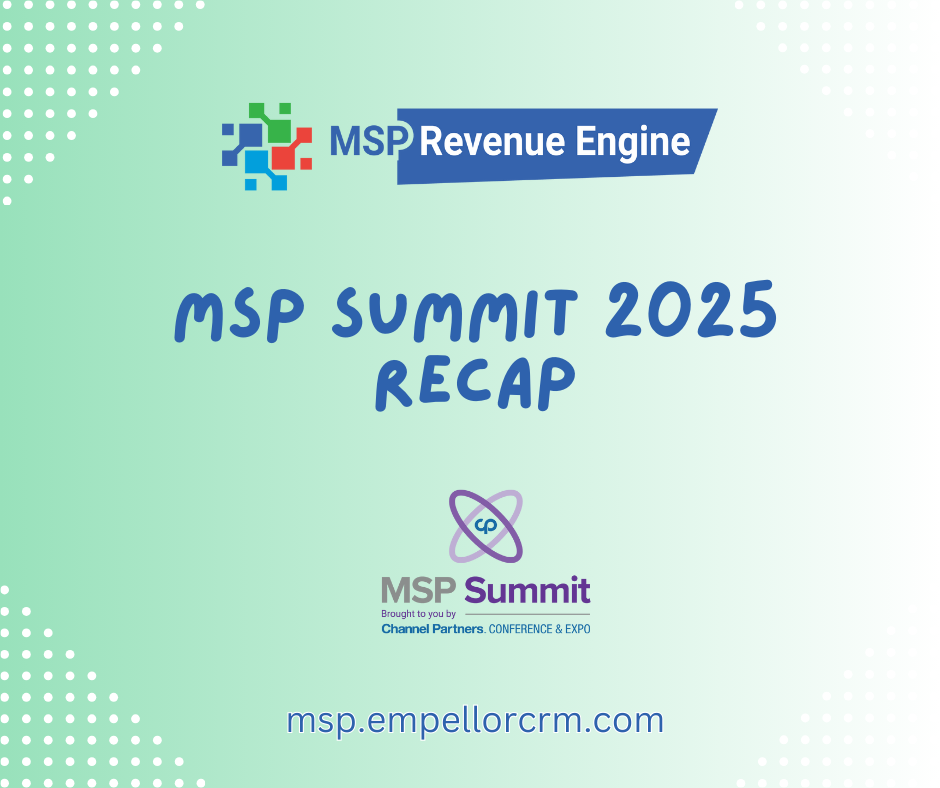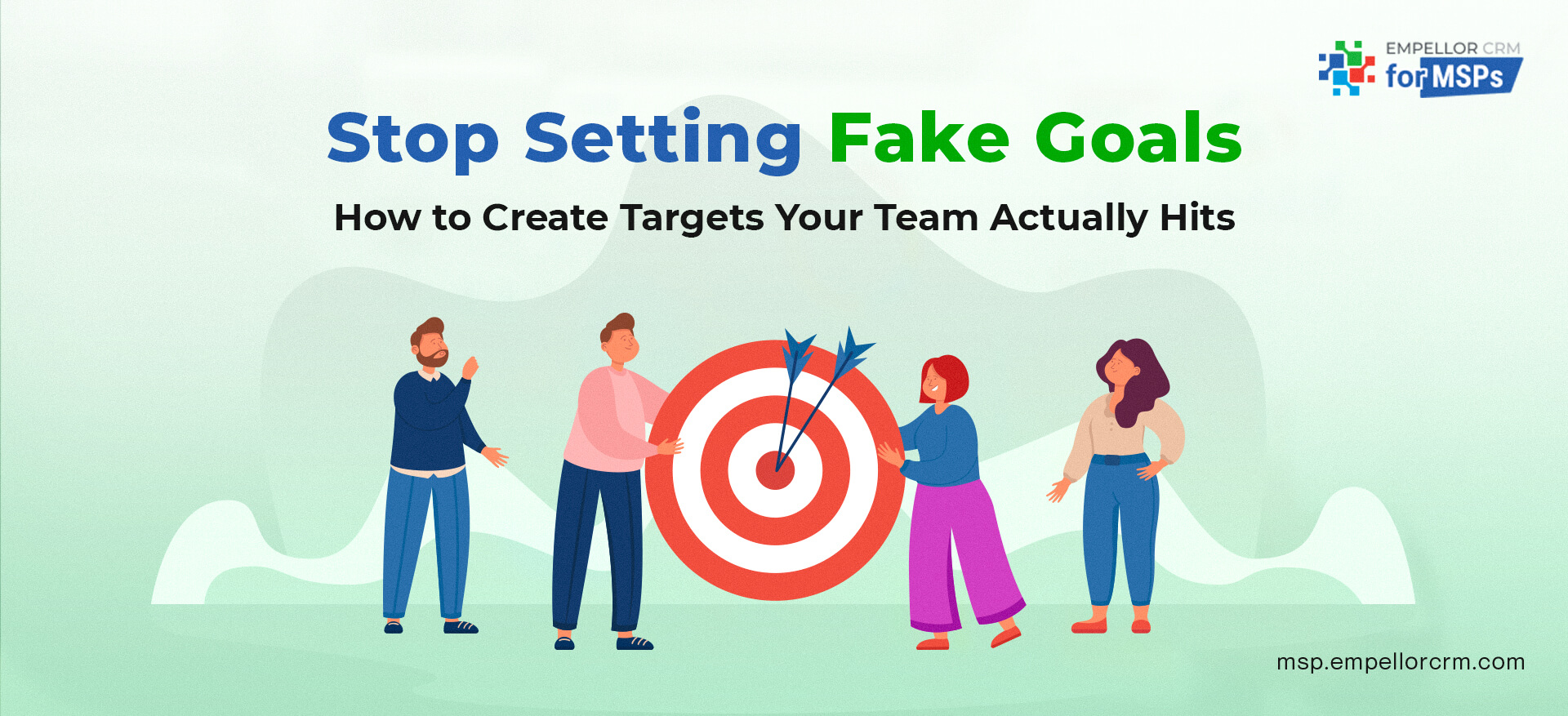The Fatal Mistake MSPs Make: Selling to Everyone
Many MSPs believe they should take on any client willing to pay. The logic seems sound—more customers mean more revenue, right? Wrong.
When everyone is a target, no one is a priority. Instead of attracting high-value clients, you end up with:
- Price-sensitive buyers who negotiate down your margins
- Unaligned customers who expect services you don’t specialize in
- Clients that drain resources without delivering long-term value
A full pipeline means nothing if it’s filled with the wrong opportunities.
The Three Ways a Broad Target Market Hurts MSP Sales
1. Your Messaging Becomes Too Generic
When you try to appeal to everyone, your marketing becomes vague, unmemorable, and ineffective.
Compare these two MSP value propositions:
❌ We provide managed IT services to businesses of all sizes.
✅ We help law firms streamline compliance and cybersecurity with managed IT solutions.
Which one stands out? The second message speaks directly to a defined audience with specific needs. When prospects see messaging that resonates, they’re more likely to engage.
2. Your Pipeline Fills With Bad Leads
Without a clear ideal customer profile (ICP), your sales team wastes time chasing leads that:
- Don’t understand the value of managed IT services
- Are only shopping for the lowest price
- Lack long-term growth potential
The result? A lower close rate and wasted effort on leads that were never going to convert.
3. Your Close Rate Drops
When an MSP focuses on a specific industry or business type, the sales process becomes more predictable and effective.
For example, an MSP specializing in healthcare IT compliance can immediately build trust with medical practices. They understand industry regulations, common pain points, and best practices.
But an MSP without a niche? They enter every sales conversation starting from zero—with no established credibility, making it much harder to close deals.
How to Fix Your MSP Targeting Strategy
The best MSPs don’t sell to everyone—they position themselves as the go-to solution for a specific audience.
Here’s how to shift your strategy:
1. Define Your Niche
A strong MSP sales strategy starts with clear client segmentation. Look at your best existing clients and identify:
- Industry or vertical (e.g., healthcare, law firms, finance, construction, etc.)
- Company size and revenue range
- Common pain points they share
- Their decision-making process
If 70% of your most profitable clients fall into a specific category, double down on that audience rather than chasing every opportunity.
2. Align Sales and Marketing Messaging
Once your ideal client is defined, your website, sales pitch, and marketing content should speak directly to them.
- Highlight specific industry pain points in your blog content
- Showcase case studies from similar businesses
- Create targeted sales enablement materials that resonate with their concerns
The goal? When the right prospect lands on your website, they instantly feel like your MSP was built for them.
3. Qualify Leads Early
If your sales team spends weeks nurturing leads that never convert, it’s time to improve your qualification process.
- Set up clear disqualification criteria (e.g., minimum company size, budget range, service requirements)
- Use targeted ad campaigns and inbound strategies to attract the right fit
- Implement an early-stage lead assessment to prevent wasted time on non-buyers
Filtering out bad leads early ensures your sales team focuses on prospects that actually matter.
Conclusion
A strong MSP sales targeting strategy doesn’t chase every lead—it prioritizes the right clients.
By defining your ideal customer profile, aligning your messaging, and filtering out unqualified leads early, you can improve your close rate, increase margins, and create a scalable pipeline of high-value clients.
If your MSP is struggling to close deals, the problem isn’t your sales team—it’s your targeting. Now is the time to fix it.



